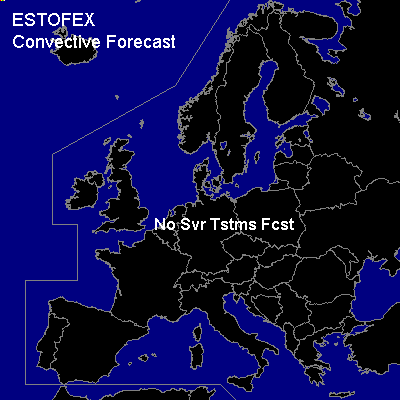

CONVECTIVE FORECAST
VALID 06Z MON 26/01 - 06Z TUE 27/01 2004
ISSUED: 25/01 18:38Z
FORECASTER: DAHL
There are no thunderstorms forecast.
SYNOPSIS
Intense upper frontal zone is extending from the E Atlantic across SW Europe into the Mediterranean. Embedded short-wave trough is supporting strong cyclogenesis over the Gulf of Biscay ... this cyclone is expected to reach peak intensity during the first few hours of the FCST period and move across France into southern Germany. Vort max associated with the short-wave trough is progged to become fairly elongated ... and spread into NRN Mediterranean regions during the day. Downstream ... another vort max will cross Greece and the Aegean Sea on Monday morning ... and move into the eastern Mediterranean Sea. Main frontal boundary at low levels is stretching from N Iberia across the central into the SE Mediterranean Sea.
DISCUSSION
...West and Central Mediterranean...
Weak wave cyclones along the frontal boundary will accompany the Mediterranean vort maxima. Sheets of weak elevated instability appear to be present in the modified
subtropical/Atlantic air mass S of this boundary over SW Europe (ref. La Coruna, Spain, Sunday 12Z ascent) ... and it appears that especially in the WAA regime E of the frontal wave moving across the W and central Mediterranean a few convective cells could be embedded in the stratiform precip ... maybe producing a few discharges. A GEN TSTM area is not necessary with this activity.
...Aegean Sea...
Over and south of the Aegean Sea ... a few TSTMS may occur ahead of downstream vort max in the first few hours of the forecast period. However ... given current sparsity of TSTMS with this feature ... and no indication that significant destabilization/increase in forcing for UVM will occur ... confidence that significant TSTM threat exists is rather low ATTM.
...North Atlantic and North Sea...
A few lighning strikes may accompany regions of enhanced cellular convection over the N Atlantic and the North Sea ... but TSTM coverage is expected to remain too low for a TSTM outlook.
#